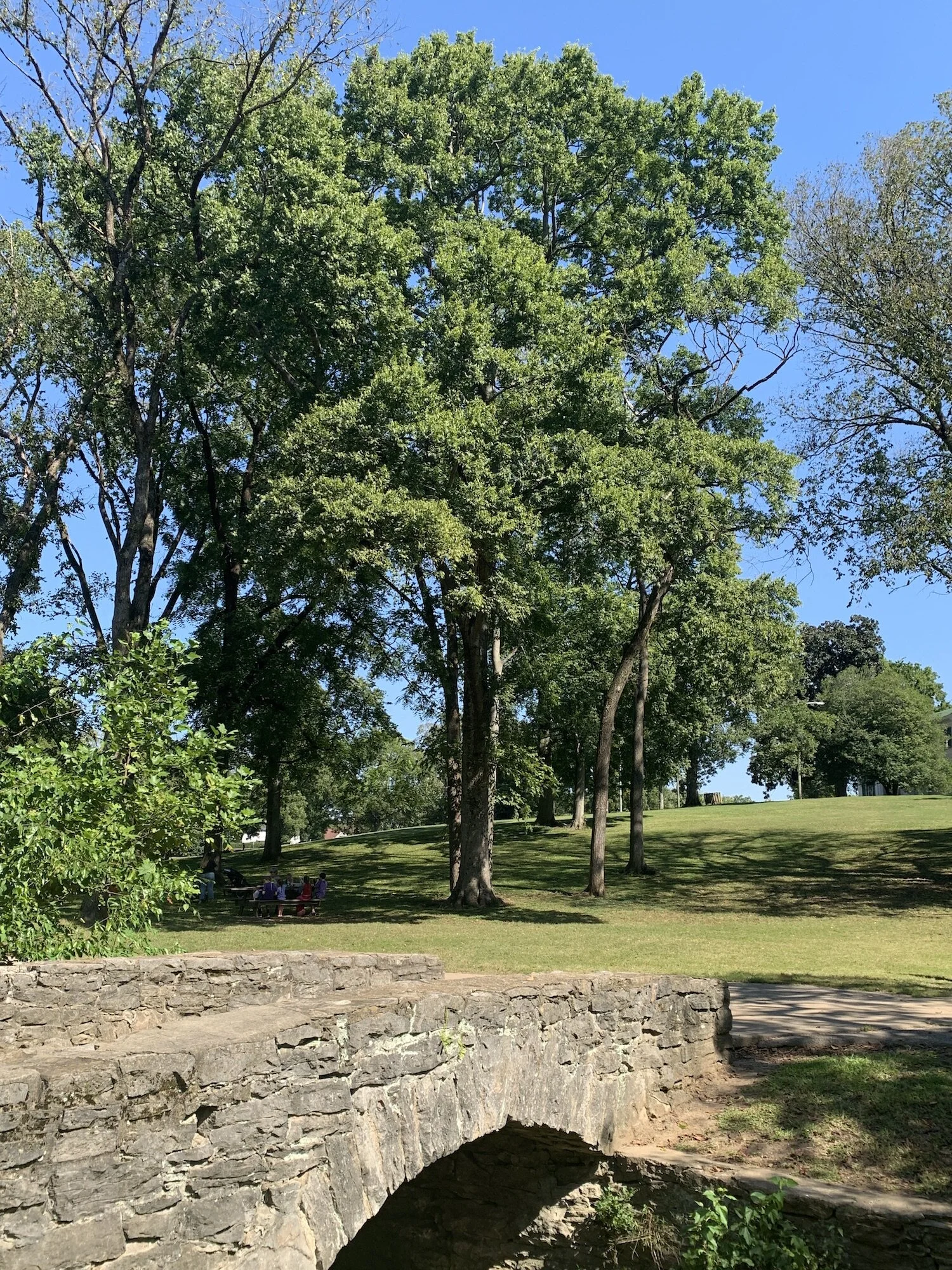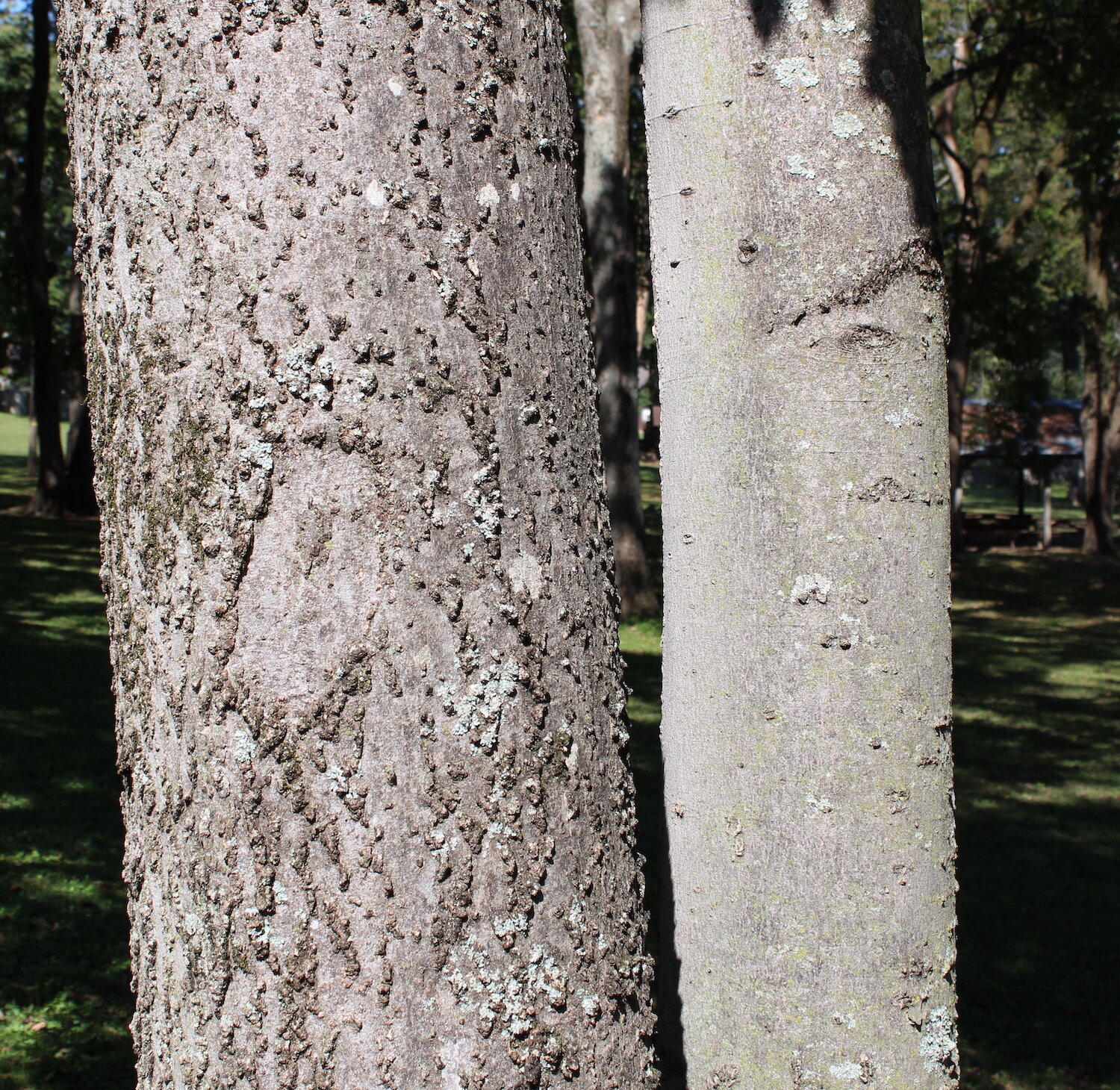Let's Talk About Hackberries
Learning to Love the Humble Hackberry
By Michael Davie
NTCC Board Member and Certified Arborist
I travel around the Nashville area daily, looking at trees all day long. I speak with people about their concerns with their trees, the trees they love, the ones they hate, and the ones they’re afraid of. No species evokes more strong feelings in Nashvillians than hackberries, and most of the time what I hear is, “I hate hackberries” or “those are trash trees” or the like. There are many reasons for these negative opinions that I’ll get into, but probably the biggest reason is that hackberries are by far the most common species throughout the Nashville Basin, which is the limestone-rich area extending from West Nashville to beyond Murfreesboro. Limestone creates a soil that is rich and with a high pH (more alkaline). Hackberry trees can grow in many types of soils, and a range of pH levels, but really feel happiest in limestone soils — hence their ubiquity in our region.
I’ve got a theory that the most common trees in any area become the most hated. They’re so common they’re not considered “special,” and people have to deal with managing them more often than other types of trees. If there’s a storm, it stands to reason that the most common tree will likely be the most commonly damaged.
One of many towering hackberries at Sevier Park.
What to Know About Hackberries
Habitat for Wildlife
But there are many reasons to appreciate and even embrace this prolific tree. Hackberries provide food and habitat for a large number of species. The berries are plentiful and nutritious for birds and other animals and insects, and even those insects are food for other birds. The leaves provide food for Hackberry emperor butterfly and many other butterflies and insects. Even the decayed hollows provide habitat for animals, birds, insects and other critters.
And they can be beautiful trees. Graceful branching, fine twigs, dense crowns and open forms, cool corky bark or smooth grey bark…. Hackberries really are wonderful at times.
Hackberry leaves are spear-shaped with serated edges.
Now, I’m using the name “hackberry,” but in reality, in our area we have at least three species in the genus Celtis, arguably more, and even more varieties (which are distinct variations within species). We’ve got common hackberry, Celtis occidentalis, and the sugarberry, Celtis laevigata, but many of the differences between these trees are subtle, and they commonly hybridize, which confuses things even more, so to simplify things let’s just lump them together as hackberry, okay?
Common hackberries become more prevalent northward; likewise, sugarberries are more prevalent to the south. But the Venn diagram of their ranges shows an overlap here in Nashville, and we seem to be the nexus of hackberry, maybe more than anywhere else. So with all of the variation of hackberry, there is also a wide variation in form, bark texture, structure and overall quality. I’ve seen some real beater hackberries in my time, and I’ve seen some spectacular specimens as well. Their branch form in general is quite attractive, and in winter around Nashville they provide some of the most beautiful silhouettes.
Two side-by-side hackberry trunks show how the bark can be either rough and corky or smooth.
Fast Growers
So why are hackberries so common here? In general hackberries are what’s known as “early successional,” meaning they come in quickly after clearing, treefall or in open areas. In forests, if a tree falls, generally speaking early successional species take off first, while slower-growing late successionals come behind and beneath. These early species generally grow fast and don’t live as long, because their strategy is to win with numbers, seeding prolifically and spreading quickly in light gaps. So in urban and suburban disturbed areas that aren’t old forests, hackberries are one of the species that come in quickly and can take over for a while, but don’t really have a long-term strategy to stay around like some other species. I say “long-term” in the sense of trees. Around here, long-lived could be 400 years or more, whereas hackberries in general don’t often live to 100 years (though there are exceptions).
There are always some trade-offs that come with rapid growth. Fast-growing trees tend to be weaker, more brittle, less shade-tolerant, more disease prone or some combination of those. In hackberries, while the wood is fairly strong and heavy, they put barely any energy into decay or pest resistance. So all trees grow a new outer layer each year, like a new skin, and shut down one internally, putting some energy in defensive compounds to protect the wood from pests and fungal decay. Hackberry trees are good at growing that new layer, but don’t do the defensive part well. If they’re healthy and robust, without injuries that allow entry for fungal pathogens, they can be sturdy and durable trees. But if they are stressed or damaged they can start to have problems that can snowball, the most important for our purposes are fungal cankers and butt rots. Yes, “butt rot” is a real term. Fungal pathogens that cause injuries and decay at the base and roots of trees are butt rots. This is the part of the tree that holds trees in the ground, and if you think about all of the forces pushing on the above-ground part of the tree, the fulcrum of that lever is at ground level. That’s the part of the tree that holds trees in the ground, and it’s why they swell out at ground level for stability. Having decay there is really not the greatest thing. Fungal cankers are tricky and sometimes hard to see — they are fungi that get in an injury somewhere on the tree and make a wound that can’t heal. By keeping the wound open the internal wood is open to decay that weakens branches and stems above ground and makes them more likely to fail.
“Please – let’s stop blaming hackberries for a bug we brought over that makes a mess. The trees are also the victims here! ”
Another complaint is that hackberries drop “sap” all over things beneath them. Well, if you didn’t know this already I’ll be the one to tell you: It’s not sap, it’s crap. Hackberry woolly aphid is an introduction from Asia that showed up here around 20 years ago and has found the mother lode of hackberries. They feed almost exclusively on hackberries, and they have no problem finding a meal in Middle Tennessee. They suck the sugars out of the leaves, and subsequently poop out a lot of sugar onto everything beneath the trees in a fine, poopy mist from thousands and thousands of aphids. It makes things sticky, and then sooty mold grows on the sugar and makes everything black beneath the trees. But, please – let’s stop blaming hackberries for a bug we brought over that makes a mess. The trees are also the victims here! The aphids are fairly treatable by many methods; if you don’t want to use chemicals, you can even try biological controls for at least some help in keeping them down.
Sure, hackberries can be a little messy, and you have to keep an eye on them, and maybe I wouldn’t choose to plant one close to a house . . . but don’t just hate them just because they’re hackberries. If you have them, keep vines off of them so you can keep an eye on them, get an arborist to occasionally check them out for you, maintain them, water them occasionally, and avoid disturbing soil around them, like any other tree. With these precautions, they can be fantastic additions to the landscape.
Nashville native Michael Davie is local manager & board certified master arborist at Bartlett Tree Experts.
To stay updated on tree growing strategies and news about Nashville’s canopy, sign up for our email newsletter!



